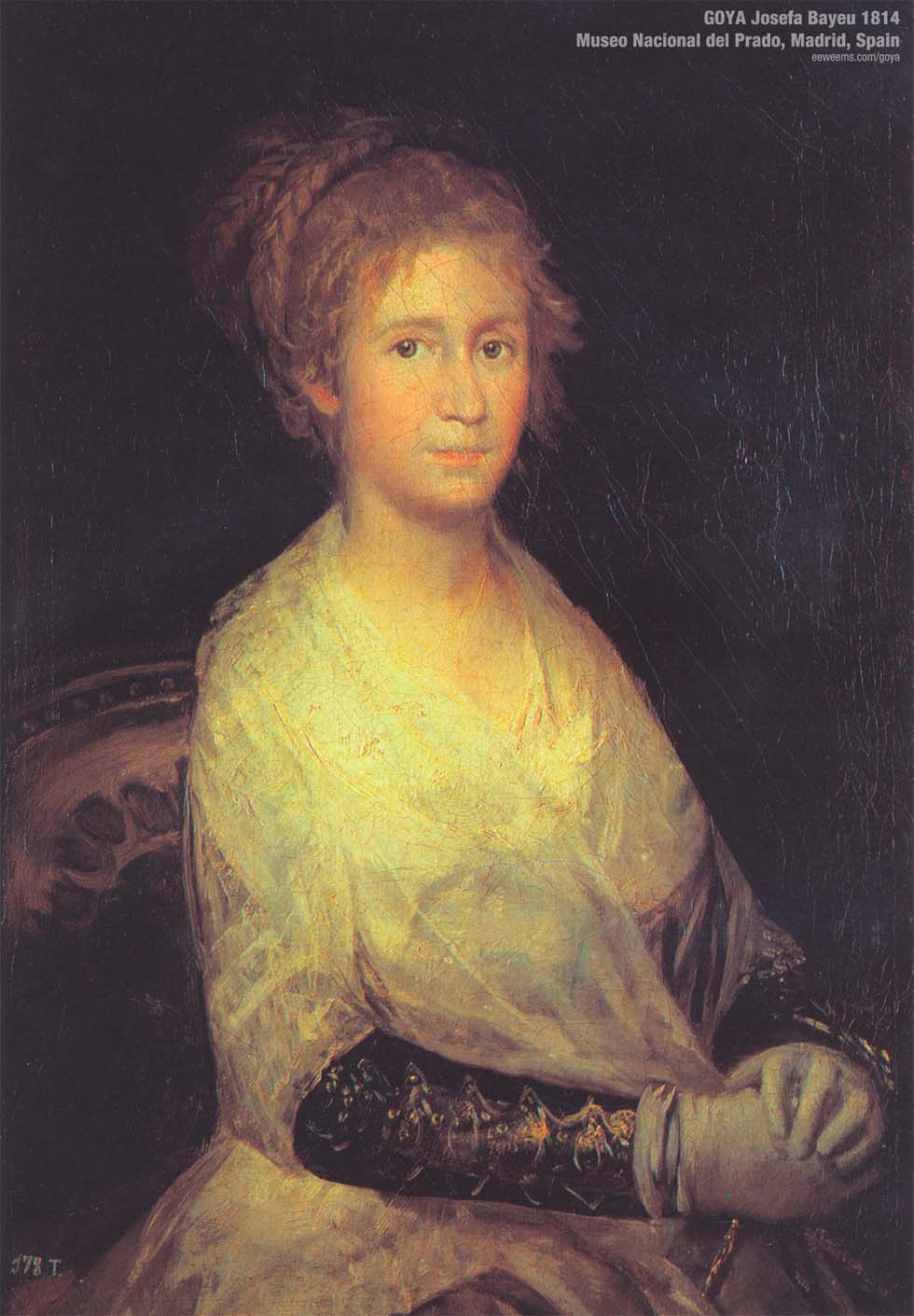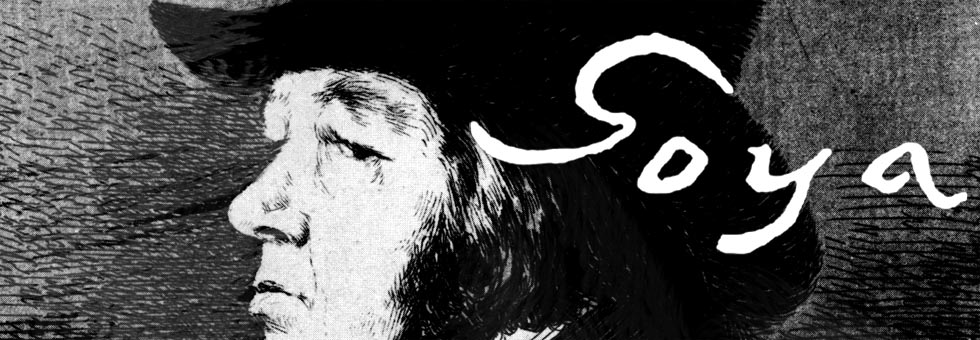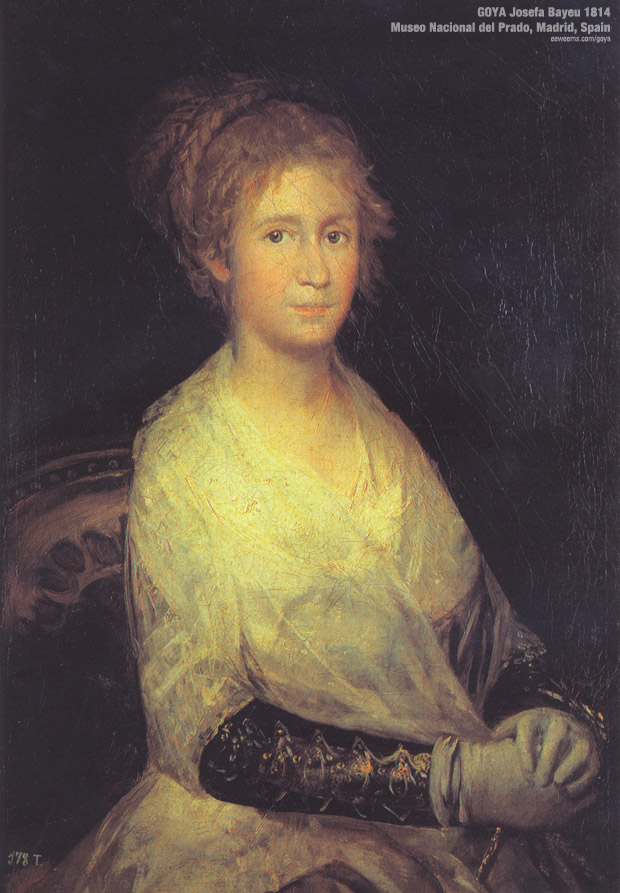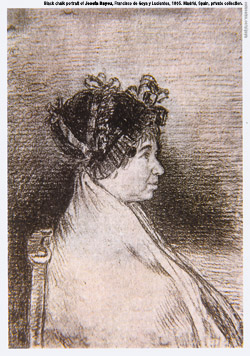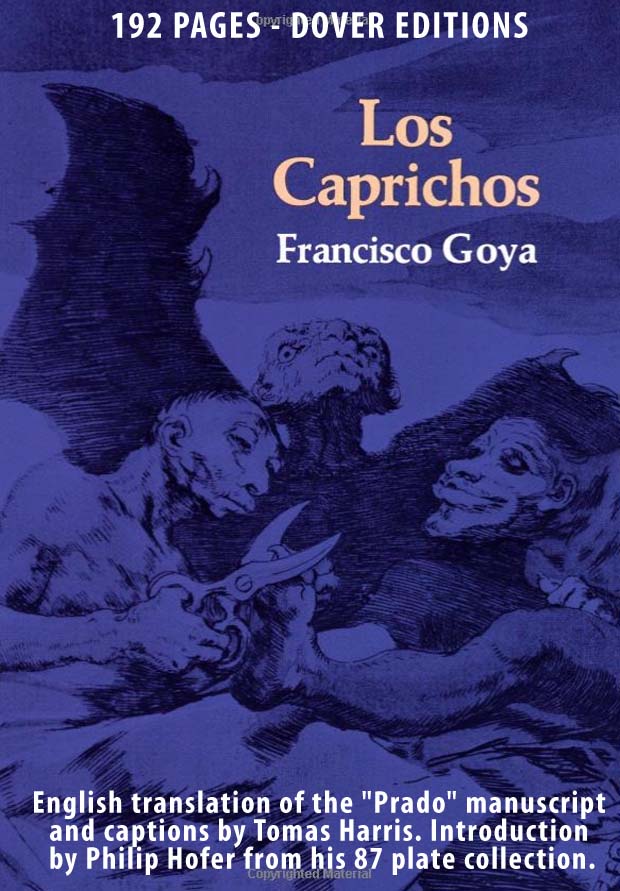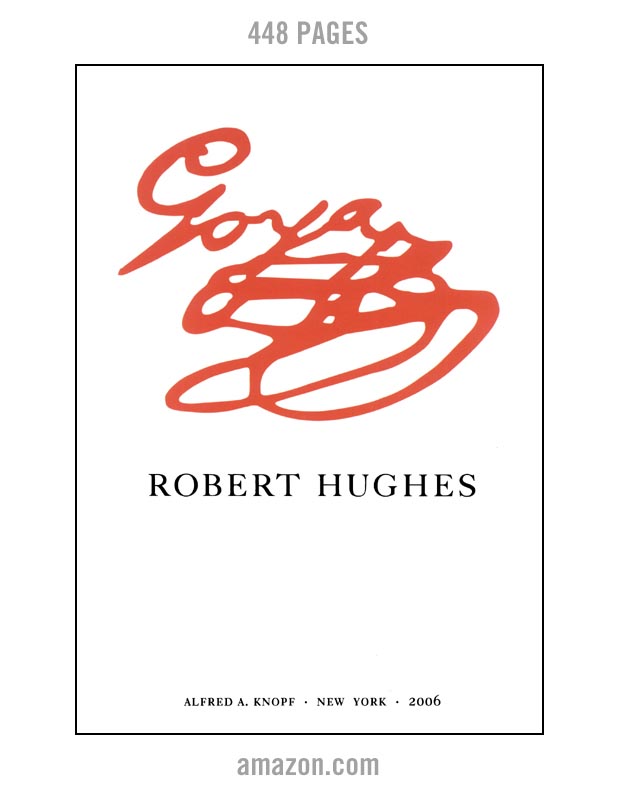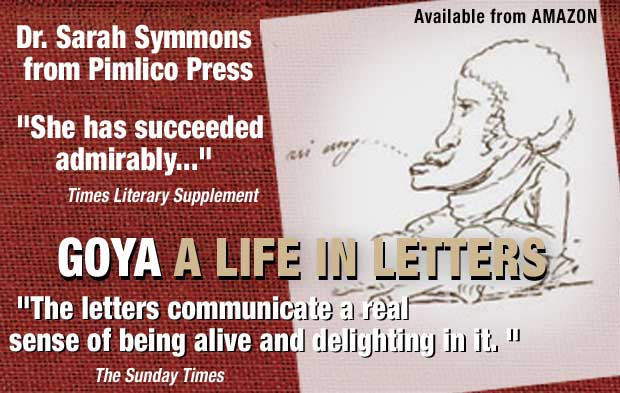The Black Paintings
Portrait of Josefa Bayeu
Enlarge image to 1400 pixel size
Oil on canvas
81 cm by 56 cm
Prado Museum, Madrid
Disputed dates of creation with source:
1814 - Prado Museum
1790 - August Mayer (in his book "Goya")
Update Feb 2011: Writer Jacek Dehnel sent an email mentioning an important error in the previous text about dating this image (see below):
"[this Goya site] wrote:
"Evidense about the clothing style and the lighting in the painting dates the image to 1815, a time when Goya's wife Josefa would have been much older than the apparent youthfullness shown here" and "Josefa would have been a much older woman in 1815 than what is presented in this image"I would like to point out, that Josefa not only would look much older in 1815, but also that she was already dead for 3 years (she died in 1812)."
About the 1814 portrait of Josefa Bayeu
Revised summary about this image: In some quarters there is a dispute about whether this painting is actually of Goya's wife Josefa, or some other unidentified sitter. Some modern experts are suggesting the sitter for this portrait might be Leocadia Zorilla de Weiss. Evidense about the clothing style and the lighting in the painting dates the image to 1815. However, the hair styling suggests the timing is from the 1790s during the French Restoration (see page 207 from the book Goya: Images of Women, section written by Aileen Ribeiro, published by the National Gallery of Art, 2002).
Of course, Goya's skills were such that he could have easily taken an unfinished painting from an earlier period and finished it in his newer style (or entirely repaint the image) according to some new idea about what he wanted in the picture. It is within the scope of Goya's abilities to paint a younger version of his wife should he have chosen to do so. This is hardly unusual for artists to do, as many have painted posthumous portraits of various subjects. However, these possible motivations are inventions on my part, as are the ideas of some experts that the image is of Leocadia Weiss. There is simply no evidence except the traditional designation that it is Josefa Bayeu.
Related:
To view Goya's charcoal drawing of his wife Josefa Bayeu go here.
This page revised August, 2011- Update June 2019
AMAZON
Goya The Terrible Sublime - Graphic Novel - (Spanish Edition) - Amazon
"From this headlong seizure of life we should not expect a calm and refined art, nor a reflective one. Yet Goya was more than a Nietzschean egoist riding roughshod over the world to assert his supermanhood. He was receptive to all shades of feeling, and it was his extreme sensitivity as well as his muscular temerity that actuated his assaults on the outrageous society of Spain." From Thomas Craven's essay on Goya from MEN OF ART (1931).
"...Loneliness has its limits, for Goya was not a prophet but a painter. If he had not been a painter his attitude to life would have found expression only in preaching or suicide." From Andre Malroux's essay in SATURN: AN ESSAY ON GOYA (1957).
"Goya is always a great artist, often a frightening one...light and shade play upon atrocious horrors." From Charles Baudelaire's essay on Goya from CURIOSITES ESTRANGERS (1842).
"[An] extraordinary mingling of hatred and compassion, despair and sardonic humour, realism and fantasy." From the foreword by Aldous Huxley to THE COMPLETE ETCHINGS OF GOYA (1962).
"His analysis in paint, chalk and ink of mass disaster and human frailty pointed to someone obsessed with the chaos of existence..." From the book on Goya by Sarah Symmons (1998).
"I cannot forgive you for admiring Goya...I find nothing in the least pleasing about his paintings or his etchings..." From a letter to (spanish) Duchess Colonna from the French writer Prosper Merimee (1869).
GOYA : Los Caprichos - Dover Edition - Amazon
